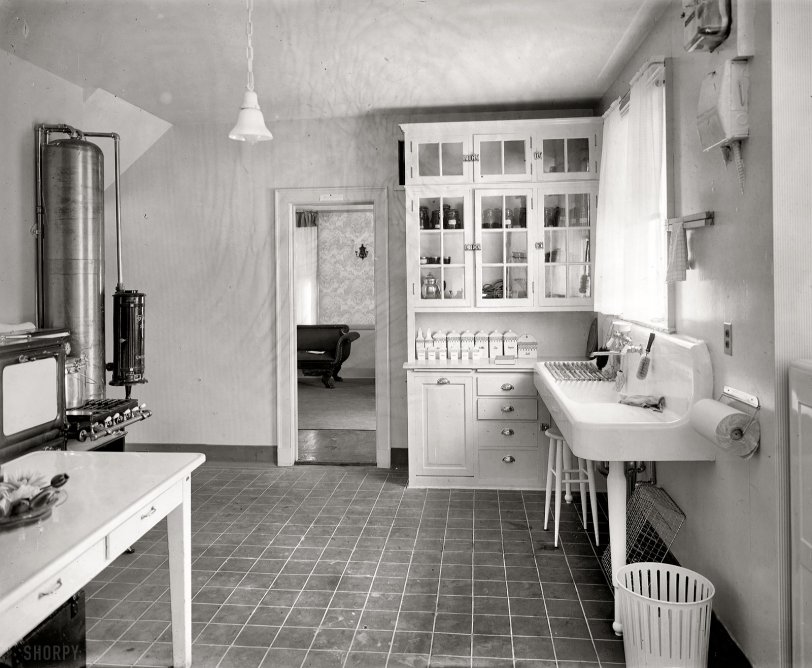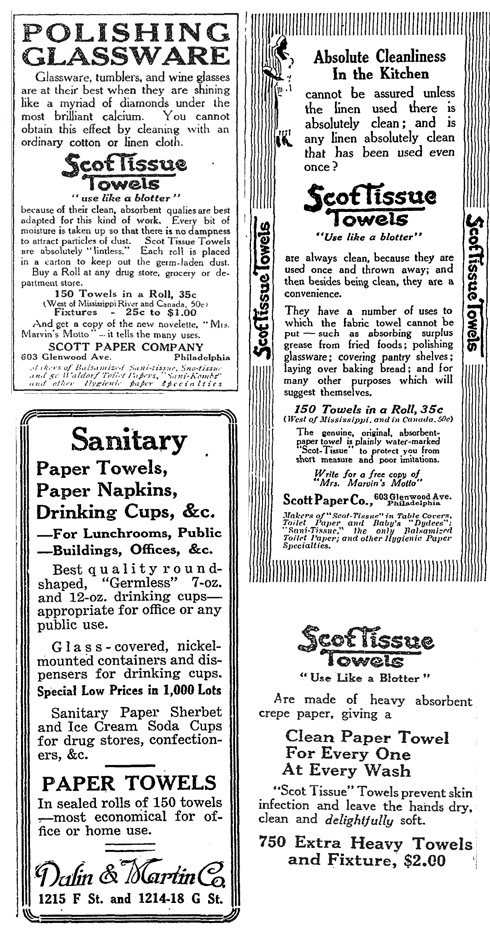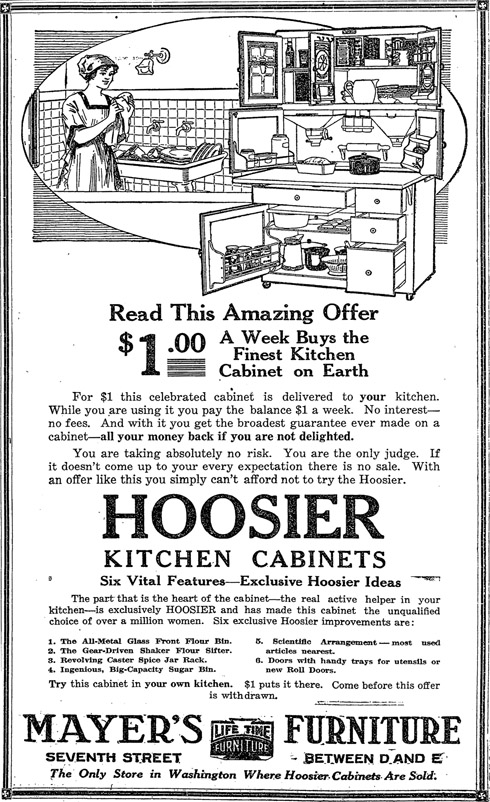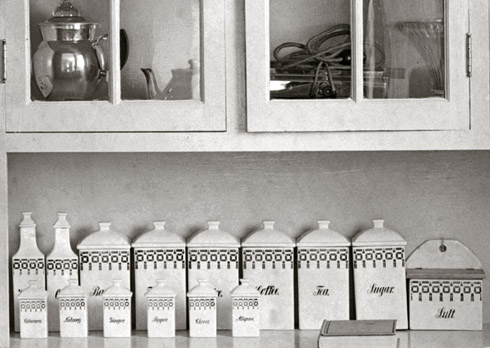


Framed or unframed, desk size to sofa size, printed by us in Arizona and Alabama since 2007. Explore now.
Shorpy is funded by you. Patreon contributors get an ad-free experience.
Learn more.

- Baldwin 62303
- Baldwin VO-1000
- Cold
- No expense spared
- Tough Guys
- Lost in Toyland
- And without gloves
- If I were a blindfolded time traveler
- Smoke Consumer Also Cooks
- Oh that stove!
- Possibly still there?
- What?!?
- $100 Reward
- Freeze Frame
- Texas Flyer wanted
- Just a Year Too Soon
- WWII -- Replacing men with women at the railroad crossing.
- Yes, Icing
- You kids drive me nuts!
- NOT An Easy Job
- I wonder
- Just add window boxes
- Icing Platform?
- Indiana Harbor Belt abides
- Freezing haze
- Corrections (for those who care)
- C&NW at Nelson
- Fallen Flags
- A dangerous job made worse
- Water Stop
Print Emporium
Restoration Hardware: 1920

New construction with the latest in kitchens in the Washington, D.C., area circa 1920. National Photo Company Collection glass negative. View full size.
Those old water heaters were dangerous!
Notice the old water heater on the left, and the lack of a safety "blowoff" valve at the top. If allowed to overheat, the cylinder would rupture, causing terrible injuries!
[It does have a pressure relief valve, with the outlet shown here. - Dave]
The Big Bin
Generally people stored their potatoes and onions in the bin. Of course they would not be mixed up, that could make for some nasty rotting things.
[Below: Hoosier ad from 1917 showing flour and sugar bins. Click to enlarge. - Dave]
Duly Noted?
There's a note tacked above the doorway to the parlor. Odd place to leave a shopping list. This inquiring mind would love to know its content.
[It's all a blur, unfortunately. - Dave]

Icebox
I think I do see one, in the bottom far right. Only a corner shows, but it looks like an icebox to me.
[There's a portable ice chest on the left, under the table. - Dave]
Museum Display
The roll of paper towels (not invented per se until 1931) is a dead giveaway along with no hookup for the vents, a cupboard squeezed in behind the sink, electric outlet over sink, tile floor -- all tell me this was put together as a display of what a 1920's kitchen might have looked like but too many things just don't fit the time.
[Incorrect on all counts. Below, paper towel ads from 1912, 1913 and 1917. "150 towels in a roll." Other examples from this National Photo series showing houses under construction are here, here and here. - Dave]

Any chance of a close up?
I'd love to see what each of those canisters & bottles holds! My grandmother in Massachusetts had a kitchen like this into the 1970s.
[Click to enlarge. - Dave]
How Long?
I wonder how long it will be before someone tells us that they didn't have paper towels in 1920.
Updated: A whole two posts.
Same sink
My sister had a very smiliar sink in her first apartment in 1994. She broke most of the dishes she got for her wedding in that sink!
Canisters
My mother had the exact same spice jars on a wall mounted wooden shelf. It belonged to her mother and an aunt got it when Grandma died. When the aunt died, Mom finally got it. It was her most treasured possesion. The 71 Northridge quake destroyed it. I still have one or two remaining jars and the shelf.
Tight
Unless my eyes deceive me, it looks like the sink is mighty close to the cabinet; that would not leave enough room to fully open the top drawer in the center, nor enough room to access the far right large cabinet door at all. Was this a working kitchen or a display kitchen?
[We can say at least that it's an unfinished kitchen. No icebox in either photo, and the stove and boiler heater are missing their flues. - Dave]
Flour
I'm pretty sure the leftmost lower cabinet door (the one with the handle at the top) is a flour bin. My grandmother's kitchen had one, hinged at the bottom. It could hold an enormous amount of flour. When you bake every day you need quite a bit of flour.
No thank you.
"Wasted space" comes to mind. The range is just too far away from everything else. Seems you'd spend half your time in the kitchen walking the floor. But I love the separate parts: the cabinetry, the sink, the big window, and the canister set for sure.
Plastered
It's pretty weird how the fuse box is plastered in, and how the flexible conduits unevenly disappear into the wall like that. At least the meter got boxed in for a more finished look. Still, it's a much cleaner look (and safer) than having the hot/neutral pairs running along on the surface like they did before romex was invented.
Flour bin?
I'm curious about the larger cabinet door on the left side of the drawers in the china cabinet. The placement of the handle at the top suggests that it opens at an angle from the top. Could it have been a bin used to store flour? I know Hoosier cabinets had similar bins, but I've never seen a built-in cabinet with one.
Electric Meters and the Frugal Budgeter
The items are exactly what Dave says, in fact the meter being above the wired fuse box (one can make out the corrugated-metal covered main-wires disappearing into the wall plaster) is quite helpful in seeing your usage and truly metering how much a bill can be approximated. Unfortunately, many people easily saw that the meter itself could be unplugged and actually re-plugged upside down and it would actually reverse the flow of the meter, while still supplying electricity to the home. The bill would thus be lower and it was a bit of a game to plug and unplug so as to never let on to the power company that nothing was amiss and usage reflected a strangely, and thus too low use for a normal life in a 1920s home. This was easy to do and would not be seen if done in the sequestered environment of such a nice kitchen. Meters were removed to the outsides of houses and this practice was severely curtailed, to power company's relief. The battle of the American budgeter and company's pricing of a product or service had begun.
Nice plastering
I like the way they plastered the cables from the fuse box in the walls. They could have at least made them evenly matched. What's the square hole behind the cabinet by the door? Too big to be a vent. (It's also blocked off)
[It looks like a furnace register. - Dave]
I'd like it, too!
I love this kitchen! So bright and airy and - what's the word? - oh yeah, "sanitary." What are the dispenser-looking things hanging on the wall next to the window? Is that an enamel-topped table? Sweet! And I've never seen a 15-piece canister set, so I'll be grabbing that when I visit this place in my time machine.
[Next to the window: Fusebox and what looks like an electric meter. - Dave]
I'll take it!!
Love the cabinet, and the hardware, and the ceramic canisters and the glass storage containers in the cabinet. In fact, there was the exact sink in the house our folks bought in Larkspur, California, in 1941. Later, when Mother had the kitchen remodeled, she had a cabinet added under the sink with drawers. My brother probably has a photo of it that he can post.
-- "Sister of tterrace"
[I think he already did. - Dave]


























On Shorpy:
Today’s Top 5